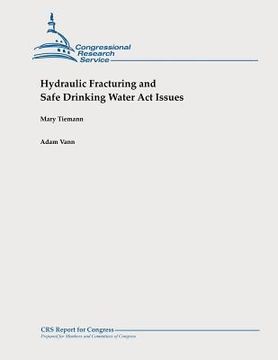Reseña del libro "Hydraulic Fracturing and Safe Drinking Water Act Issues (en Inglés)"
Hydraulic fracturing is a technique developed initially to stimulate oil production from wells in declining oil reservoirs. More recently, it has been used to initiate oil and gas production in unconventional (i.e., low-permeability) reservoirs where these resources were previously inaccessible. This process now is used in more than 90% of new oil and gas production wells. Hydraulic fracturing is done after a well is drilled and involves injecting large volumes of water, sand (or other propping agent), and specialized chemicals under enough pressure to fracture the formations holding the oil or gas. The sand or other proppant holds the fractures open to allow the oil or gas to flow freely out of the formation and into a production well. Its application, along with horizontal drilling, for production of natural gas (methane) from coal beds, tight gas sands, and, more recently, from unconventional shale formations, has resulted in the marked expansion of estimated U.S. natural gas reserves in recent years. Similarly, hydraulic fracturing is enabling the development of unconventional domestic oil resources, such as the Bakken Formation in North Dakota and Montana. However, the rapidly increasing and geographically expanding use of fracturing, along with a growing number of citizen complaints and state investigations of well water contamination attributed to this practice, has led to calls for greater state and/or federal environmental regulation and oversight of this activity. Historically, the Environmental Protection Agency (EPA) had not regulated the underground injection of fluids for hydraulic fracturing of oil or gas production wells. In 1997, the U.S. Court of Appeals for the 11th Circuit ruled that fracturing for coalbed methane (CBM) production in Alabama constituted underground injection and must be regulated under the Safe Drinking Water Act (SDWA). This ruling led EPA to study the risk that hydraulic fracturing for CBM production might pose to drinking water sources. In 2004, EPA reported that the risk was small, except where diesel was used, and that regulation was not needed. However, to address regulatory uncertainty the ruling created, the Energy Policy Act of 2005 (EPAct 2005) revised the SDWA term "underground injection" to explicitly exclude the injection of fluids and propping agents (except diesel fuel) used for hydraulic fracturing purposes. Consequently, EPA currently lacks authority under the SDWA to regulate hydraulic fracturing, except where diesel fuel is used. However, as the use of this process has grown, some in Congress would like to revisit this statutory exclusion. Several relevant bills are pending. H.R. 1084 and S. 587 would repeal the exemption for hydraulic fracturing operations established in EPAct 2005, and amend the term "underground injection" to include explicitly the injection of fluids used in hydraulic fracturing operations, thus authorizing EPA to regulate this process under the SDWA. EPA's FY2010 appropriations act urged the agency to study the relationship between hydraulic fracturing and drinking water quality. The interim report, expected in 2012, may help inform Congress on whether federal action is needed. Meanwhile, numerous states are reviewing or have revised their oil and gas rules to address the increased use of hydraulic fracturing. This report reviews past and proposed treatment of hydraulic fracturing under the SDWA, the principal federal statute for regulating the underground injection of fluids to protect groundwater sources of drinking water. It reviews current SDWA provisions for regulating underground injection activities, and discusses some possible implications of, and issues associated with, enactment of legislation authorizing EPA to regulate hydraulic fracturing under this statute.

